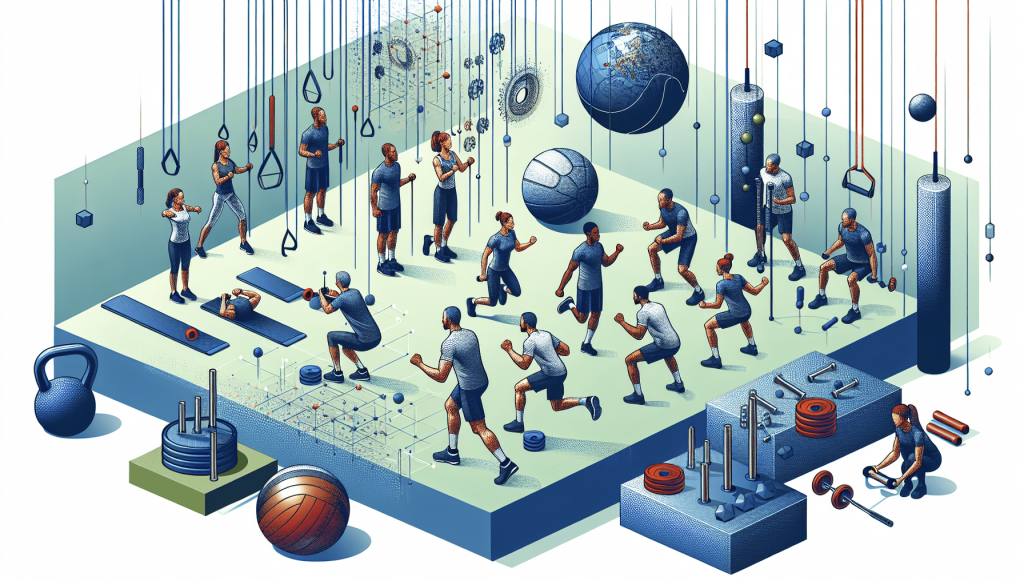Want to know the secret to building rock-hard abs and a strong core? Look no further than resistance training. If you’re wondering how you can maximize abdominal muscle growth, incorporating resistance training into your workout routine is key. This article will dive into the world of resistance training and provide answers to frequently asked questions about sculpting your six-pack and developing a robust core. Get ready to discover the power of resistance training for those coveted abs you’ve always dreamed of.

Understanding Abdominal Muscles
Anatomy of the Abdominal Muscles
When it comes to understanding abdominal muscles, it is essential to know their anatomy. The abdominal muscles consist of several key muscle groups, including the rectus abdominis, the internal obliques, the external obliques, and the transverse abdominis.
The rectus abdominis is the most well-known muscle in the abdominal region. It is a paired muscle that runs vertically from the sternum down to the pelvis. This muscle forms the coveted “six-pack” appearance when well-developed.
The internal and external obliques are located on the sides of the abdomen and play a vital role in trunk rotation and flexion. They give the waist a slim and defined look when properly trained.
The transverse abdominis, often referred to as the deep core muscle, is positioned beneath the other abdominal muscles. It acts as a natural corset, providing stability and support to the spine and internal organs.
Types of Abdominal Muscles
The abdominal muscles can be categorized into three main types based on their locations and functions. These include the upper abdominal muscles, the lower abdominal muscles, and the oblique and transverse abdominal muscles.
The upper abdominal muscles primarily consist of the upper portion of the rectus abdominis. These muscles are responsible for flexing the trunk, allowing you to sit up from a lying position.
The lower abdominal muscles are located in the lower portion of the rectus abdominis and play a crucial role in pelvic tilting and supporting the lower back. Strengthening these muscles can help improve posture and alleviate lower back pain.
The oblique and transverse abdominal muscles are situated on the sides and front of the abdomen. The oblique muscles assist in rotating and side-bending the trunk, while the transverse abdominis provides stability and compression to the abdomen.
Functions of the Abdominal Muscles
The abdominal muscles serve a variety of essential functions beyond just aesthetic appeal. They provide stability and support to the spine and pelvis, aid in trunk movement, and assist in maintaining proper posture.
Strong abdominal muscles play a vital role in core stability, which is crucial for overall body strength and injury prevention. They help transfer force between the upper and lower body, making dynamic movements more efficient and reducing the risk of strain or injury.
Moreover, the abdominal muscles are involved in breathing, acting as accessory muscles to assist in exhalation when needed. They also contribute to maintaining proper intra-abdominal pressure, which is necessary for certain exercises and movements.
Importance of Resistance Training for Abdominal Muscle Growth
Benefits of Resistance Training for Abdominal Muscles
Resistance training is one of the most effective ways to maximize abdominal muscle growth. Incorporating resistance into your abdominal training routine offers various benefits beyond simply developing a visually appealing six-pack.
Resistance training helps stimulate muscle fibers, leading to muscle hypertrophy or growth. By challenging the abdominal muscles with external resistance, such as weights or resistance bands, you can create the optimal conditions for muscle growth and strength gains.
In addition to increased muscle size and strength, resistance training for the abdominals can improve overall core stability. Stronger abdominal muscles help better support the spine and pelvis, reducing the risk of injuries and improving athletic performance in various sports and activities.
Effects on Muscle Hypertrophy
Resistance training targeting the abdominal muscles can lead to significant muscle hypertrophy, resulting in a more defined and sculpted midsection. When performed correctly and progressively overloaded, resistance exercises stimulate the muscles to adapt and grow in size and strength.
To achieve muscle hypertrophy effectively, it is crucial to incorporate a range of exercises that target different areas of the abdominal muscles. This approach ensures balanced development and maximizes overall muscle growth.
Role in Core Stability
Core stability is essential for maintaining proper posture, preventing injuries, and optimizing athletic performance. Resistance training for the abdominal muscles plays a crucial role in building and enhancing core stability.
With a stronger core, you can improve your overall balance, stability, and control during various movements and exercises. The increased stability provided by well-developed abdominal muscles allows you to generate more power and efficiently transfer force throughout the body, ultimately enhancing performance in sports and daily activities.
Designing an Effective Resistance Training Program
Setting Clear Goals
Before starting any resistance training program, it is vital to set clear goals specific to your desired abdominal muscle growth. Determine whether your primary aim is to build overall muscle size, increase strength, or achieve a more sculpted appearance.
Setting goals helps provide direction and allows you to track progress as you work towards achieving them. It also helps determine the appropriate exercises, repetitions, resistance, and workout structure that align with your specific objectives.
Choosing the Right Exercises
To maximize abdominal muscle growth, it is crucial to choose exercises that target all the different muscle groups effectively. This includes exercises for the rectus abdominis, internal and external obliques, and transverse abdominis.
Incorporate a combination of compound exercises, which involve multiple muscle groups simultaneously, and isolation exercises, which focus specifically on the abdominal muscles. This combination ensures comprehensive development and engages the muscles from various angles.
Selecting Proper Resistance and Repetition Range
Selecting the appropriate resistance and repetition range is key to both challenging the abdominal muscles and stimulating growth. Aim for a weight or resistance level that allows you to perform the exercise with proper form while still feeling challenged.
Aim for a repetition range of 8-12 repetitions for each exercise in your resistance training program. This range is typically effective for muscle hypertrophy. However, varying the repetition range occasionally can provide additional stimulus to promote continuous growth.
Structuring Your Workouts
Structuring your resistance training workouts in an organized and systematic manner is essential for progress and avoiding plateaus. Split your workouts into different days or sessions, focusing on specific muscle groups each time.
For example, you can dedicate one day solely to abdominal exercises or integrate them into full-body workout sessions. By including rest days in your workout routine, you allow your muscles time to recover and adapt, promoting optimal growth and preventing overtraining.
Including Progressive Overload
Understanding Progressive Overload
Progressive overload is a fundamental principle in resistance training that involves gradually increasing the demands placed on the muscles to promote growth and adaptation. To maximize abdominal muscle growth, incorporating progressive overload into your workouts is crucial.
The principle of progressive overload can be achieved by gradually increasing the resistance, repetitions, or sets as your muscles adapt to the workload. By consistently challenging your abdominal muscles beyond their comfort zone, you encourage the muscle fibers to grow stronger and larger over time.
Increasing Resistance Gradually
Increasing the resistance gradually is a key component of progressive overload. Start with a manageable weight or resistance level and gradually increase it as you become stronger and more comfortable with the exercises.
Whether you choose to add more weight to free weight exercises or increase the tension of resistance bands, ensure the added resistance is challenging enough to stimulate muscle growth without compromising your form.
Varying Repetition Range and Tempo
To further enhance progressive overload and maximize abdominal muscle growth, it is beneficial to occasionally vary the repetition range and tempo of your exercises. This variation challenges the muscles in different ways, promoting continuous adaptation and growth.
For example, incorporating exercises with higher repetitions or slower tempos can increase time under tension and create a greater stimulus for muscle growth. Similarly, performing exercises with lower repetitions and faster tempos can help develop power and strength in the abdominal muscles.

Targeting Different Areas of the Abdominal Muscles
Upper Abdominal Exercises
To effectively target the upper abdominal muscles and develop a well-defined “six-pack,” incorporating specific exercises is essential. Exercises such as crunches, sit-ups, and leg lifts primarily target the upper portion of the rectus abdominis.
Ensure you perform these exercises with proper form and focus on contracting the upper abdominal muscles throughout the movement. Engaging the targeted muscles will enhance their activation and promote optimal growth.
Lower Abdominal Exercises
Strengthening the lower abdominal muscles is crucial for overall core strength and stability. Specific exercises such as reverse crunches, leg raises, and pelvic tilts effectively target the lower portion of the rectus abdominis and help build a balanced midsection.
When performing lower abdominal exercises, focus on initiating the movement from the lower belly region rather than relying solely on hip flexion. By consciously engaging and activating the lower abdominal muscles, you can maximize their growth potential.
Oblique and Transverse Abdominal Exercises
Targeting the oblique and transverse abdominal muscles is crucial for achieving a well-rounded and sculpted core. Exercises such as Russian twists, side planks, and bicycle crunches effectively engage these muscle groups.
When performing oblique exercises, ensure you twist and rotate from the waist while maintaining proper form and alignment. This action allows the oblique muscles to work more efficiently, leading to improved definition and strength.
Including exercises that activate the transverse abdominis, such as the plank and bird dog pose, helps provide the necessary stability and support to the core. Remember to engage this deep core muscle by drawing your navel towards your spine during these exercises for optimal activation.
Incorporating Compound Exercises
Benefits of Compound Exercises for Abdominal Muscles
Compound exercises that involve multiple muscle groups offer several benefits for abdominal muscle growth. These exercises not only engage the abdominal muscles but also recruit surrounding muscles, resulting in overall functional strength improvement and enhanced athletic performance.
By incorporating compound exercises into your abdominal training routine, you can maximize muscle activation and create a potent stimulus for growth. Additionally, compound exercises often involve dynamic movements, replicating real-life movements and improving core stability and coordination.
Examples of Compound Exercises for Abdominals
Some examples of compound exercises that effectively engage the abdominal muscles include squats, deadlifts, lunges, and kettlebell swings. These exercises require full-body engagement and recruit the core muscles to stabilize the body during movement.
During squats and deadlifts, for instance, the abdominal muscles play a vital role in maintaining proper posture and stabilizing the spine. This engagement not only improves strength and stability but also promotes muscle growth in the abdominal region.

Utilizing Isolation Exercises
Benefits of Isolation Exercises for Abdominal Muscles
While compound exercises should form the foundation of your abdominal training routine, incorporating isolation exercises can offer additional benefits. Isolation exercises specifically target and isolate specific muscle groups, allowing for more focused muscle activation and growth.
Isolation exercises for the abdominal muscles can help improve muscle definition, enhance mind-muscle connection, and address any muscle imbalances or weaknesses. By targeting specific areas of the abdominal region, you can achieve a more balanced and sculpted appearance.
Examples of Isolation Exercises for Abdominals
Some examples of isolation exercises that effectively target the abdominal muscles include cable crunches, reverse crunches, and side bends. These exercises allow you to specifically focus on contracting and activating the abdominal muscles without significant involvement from other muscle groups.
When performing isolation exercises, pay attention to proper form and technique. Maintain a slow and controlled tempo, focusing on feeling the targeted muscles working throughout each repetition. By emphasizing quality over quantity, you can maximize the effectiveness of isolation exercises for abdominal muscle growth.
Importance of Proper Form and Technique
Maintaining Good Posture
Maintaining good posture is crucial during resistance training for abdominal muscle growth. Proper posture helps ensure optimal muscle activation and minimizes the risk of injury.
When performing abdominal exercises, focus on keeping your spine in a neutral position. Avoid excessive arching or rounding of the back, as this can place unnecessary stress on the spine and compromise the effectiveness of the exercise. Engaging the core and maintaining proper alignment will enhance muscle activation and maximize results.
Avoiding Common Mistakes
Avoiding common mistakes during abdominal exercises is essential to prevent injury and ensure efficient muscle recruitment. Some common mistakes to avoid include relying solely on momentum, using excessive weight, and neglecting proper breathing techniques.
Avoid swinging or jerking the body during exercises, as this often leads to less abdominal muscle activation and more reliance on momentum. Instead, perform the exercises with a controlled and deliberate motion, focusing on engaging the targeted muscles throughout the full range of motion.
Using excessive weight can also hinder proper form and increase the risk of strain or injury. Start with a weight or resistance level that allows you to maintain good form and gradually increase the resistance as your strength and technique improve.
Lastly, proper breathing is essential during abdominal exercises. Exhale during the exertion phase or when contracting the muscles, and inhale during the relaxation or eccentric phase. This breathing technique helps stabilize the core and optimize muscle engagement.
Engaging the Core Muscles
Engaging the core muscles is crucial to ensure the maximum activation of the abdominal muscles during resistance exercises. By consciously contracting the abdominal muscles throughout each exercise, you enhance muscle recruitment and promote growth.
To engage the core, imagine pulling your belly button towards your spine while maintaining normal breathing. This action activates the deep transverse abdominis muscle, providing stability and support to the entire abdominal region.
By consistently engaging the core and maintaining proper form and technique, you can optimize the effectiveness of resistance training for abdominal muscle growth while minimizing the risk of injury.

Balancing Resistance Training with Cardiovascular Exercise
The Role of Cardiovascular Exercise
While resistance training is vital for maximizing abdominal muscle growth, incorporating cardiovascular exercise into your fitness routine is equally important. Cardiovascular exercise offers numerous benefits for overall health and complements your resistance training efforts.
Cardiovascular exercises, such as running, cycling, or swimming, promote cardiovascular fitness, improve endurance, and aid in weight management. These exercises increase heart rate and circulation, leading to improved overall cardiovascular health.
When performed in conjunction with resistance training, cardiovascular exercise can help reduce body fat, thus enhancing the visibility of abdominal muscles. By reducing excess body fat, the abdominal muscles become more visible and defined, improving the aesthetic appearance of a well-developed core.
Finding the Right Balance
Balancing resistance training with cardiovascular exercise is essential for overall fitness and optimal abdominal muscle growth. While resistance training focuses on muscle development and strength, cardiovascular exercise promotes cardiovascular health and fat loss.
The balance between the two types of exercise depends on your individual goals and preferences. Some individuals may prioritize resistance training and include cardiovascular exercise as a supplementary activity. Others may find enjoyment in cardiovascular activities and incorporate resistance training to enhance muscle growth and strength.
Finding the right balance involves considering factors such as individual fitness level, time availability, and personal preferences. The key is to prioritize consistency and ensure that both resistance training and cardiovascular exercise are included in your fitness routine to achieve well-rounded fitness and abdominal muscle growth.
Recommended Cardiovascular Activities
There is a wide range of cardiovascular activities to choose from, depending on your preferences and fitness level. Running, brisk walking, cycling, swimming, and HIIT (High-Intensity Interval Training) are popular choices that effectively elevate heart rate and provide cardiovascular benefits.
To maximize fat burning and engage the abdominal muscles more effectively during cardiovascular exercise, consider incorporating activities that involve rotational or twisting movements. Examples include kickboxing, rowing, or dance cardio workouts.
It is important to start cardiovascular exercises at a manageable intensity and gradually increase the duration and intensity as your fitness level improves. Aim for at least 150 minutes of moderate-intensity cardiovascular exercise or 75 minutes of vigorous-intensity exercise each week, spread out over several sessions, for optimal cardiovascular health.
Tracking Progress and Making Adjustments
Importance of Tracking Progress
Tracking your progress is essential to evaluate the effectiveness of your resistance training program and make necessary adjustments. Regularly monitoring your progress allows you to assess whether you are meeting your goals and identify areas that may require improvement or modification.
Tracking progress can involve various methods, such as keeping a workout journal, taking progress photos, or using fitness tracking apps. Measure your strength gains, repetitions performed, and any changes in your body composition to gauge progress accurately.
Monitoring Strength and Repetition Increases
To ensure continuous abdominal muscle growth, it is crucial to monitor and progressively increase your strength and repetitions over time. Regularly evaluating your strength gains allows you to adjust resistance levels and ensure that your muscles are consistently challenged.
As you become stronger, gradually increase the weight, resistance, or difficulty level of your exercises. This progressive overload stimulates the muscles to grow stronger and larger, promoting continuous growth and improvement.
Similarly, monitoring the number of repetitions performed can help you track progress and make adjustments as needed. Aim to increase the repetitions gradually while maintaining proper form and technique to avoid sacrificing quality for quantity.
Adapting the Program for Continued Growth
As your abdominal muscles adapt and grow, it is essential to continuously adapt and modify your resistance training program for continued growth. Making adjustments to the exercises, resistance levels, repetition range, or workout structure can help prevent plateaus and ensure ongoing progress.
Consider periodically changing or introducing new exercises to target the abdominal muscles from different angles. This variation keeps the muscles challenged and prevents adaptation, ultimately maximizing growth potential.
Additionally, periodically reassessing your goals and adjusting the intensity or frequency of your resistance training sessions can help facilitate continued growth. Consult with a fitness professional or personal trainer to ensure that your program remains effective and aligned with your evolving fitness goals.






